
| Home | Deepsky Atlas | TheAstronews | Links | Solar System | ||||||

Hawaiian Astronomical SocietyConstellations: Puppis -- Stern of Argo Navis |
||||||||||
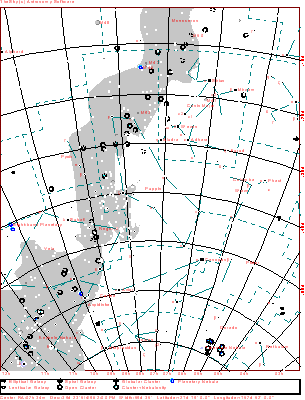
Click the map for a 916x1200 version of the above. Click here for a map better suited for use in the field.
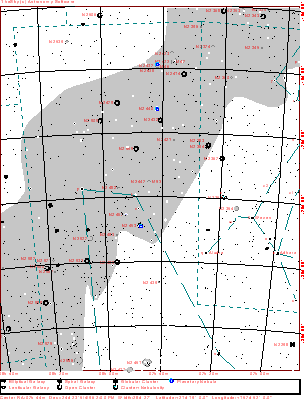
This is the northern section of the constellation. The map displays stars to magnitude 10, and deepsky objects to magnitude 12. Click here for a map better suited for use in the field.

Click here for a map better suited for use in the field.
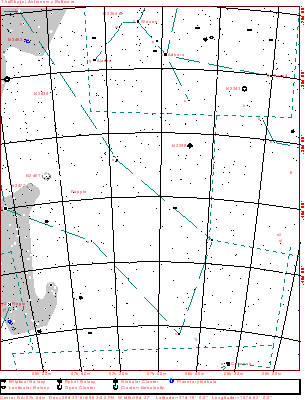
Click here for a map better suited for use in the field.
 119k JPEG NGC2539 (Best 85) an open cluster located in the northeast corner of Puppis, 7.1° south of M48 (in Hydra), and 7.3 degrees ENE of M46. Dreyer says it is very large (22'), rich (50+ stars mag. 11-13), but richer toward the west. Stars range from magnitude 11 to 13. The triple star 19 Puppis (mag. 5) sits on the southeast corner of the cluster. Image is from the Digital Sky Survey. 119k JPEG NGC2539 (Best 85) an open cluster located in the northeast corner of Puppis, 7.1° south of M48 (in Hydra), and 7.3 degrees ENE of M46. Dreyer says it is very large (22'), rich (50+ stars mag. 11-13), but richer toward the west. Stars range from magnitude 11 to 13. The triple star 19 Puppis (mag. 5) sits on the southeast corner of the cluster. Image is from the Digital Sky Survey.
|
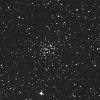 37k JPEG NGC2489 (Bennett 38) is a mag. 7.9 open cluster located in northern Puppis, 5.4° SSE of Xi Puppis. Dreyer says it is fairly large (8'), quite rich (30 stars visible in an 8"), and fairly condensed. Stars range from magnitude 11 to 13. A 3" will show it as a hazy patch. Image is from the Digital Sky Survey. 37k JPEG NGC2489 (Bennett 38) is a mag. 7.9 open cluster located in northern Puppis, 5.4° SSE of Xi Puppis. Dreyer says it is fairly large (8'), quite rich (30 stars visible in an 8"), and fairly condensed. Stars range from magnitude 11 to 13. A 3" will show it as a hazy patch. Image is from the Digital Sky Survey.
|
 75k JPEG Caldwell 71 (NGC2477) is a remarkable open cluster located 2.7° WNW of Zeta Puppis (bottom, left in the photo). Dreyer calls it bright (mag. 5.8), large (27'), rich and slightly condensed. There may be as many as 300 stars from mags. 9.8 to 12. The image from the Digital Sky Survey shows a nearby (1.5° to the WNW) open cluster, NGC2451. This is a loose (45' diameter) cluster of 40 stars mag. 3.6 and fainter. Total magnitude is 2.8. A mosaic from the Digital Sky Survey. 75k JPEG Caldwell 71 (NGC2477) is a remarkable open cluster located 2.7° WNW of Zeta Puppis (bottom, left in the photo). Dreyer calls it bright (mag. 5.8), large (27'), rich and slightly condensed. There may be as many as 300 stars from mags. 9.8 to 12. The image from the Digital Sky Survey shows a nearby (1.5° to the WNW) open cluster, NGC2451. This is a loose (45' diameter) cluster of 40 stars mag. 3.6 and fainter. Total magnitude is 2.8. A mosaic from the Digital Sky Survey.
|
Image on the left is a processed download from the Digital Sky Survey. The color image on the right was taken by David Jones on September 6, 1997. He used an 8" Schmidt camera, making a 15 minute exposure on hypered Kodak PJM640 film. The other "nebulosity" is comet Hale-Bopp.
|
 35k JPEG M93 (NGC2447) is an open cluster located 9° south of M46. Dreyer describes this mag. 6.2 cluster as large (22'), pretty rich, showing little condensation, and having stars at mags. 8-13. Image taken by Pedro Ré with a HiSIS22 camera (two, two minute exposures) on a 4" Meade at f6,3. 35k JPEG M93 (NGC2447) is an open cluster located 9° south of M46. Dreyer describes this mag. 6.2 cluster as large (22'), pretty rich, showing little condensation, and having stars at mags. 8-13. Image taken by Pedro Ré with a HiSIS22 camera (two, two minute exposures) on a 4" Meade at f6,3.
|
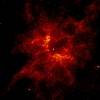 38k JPEG NGC2440 (Best 84) is a planetary nebula located 3.4° south of M46. Called by some the Insect Nebula, Dreyer describes it as quite bright (mag. 10.8 visual), but not very well defined. In short, it looks like a smallish (30") blob. 38k JPEG NGC2440 (Best 84) is a planetary nebula located 3.4° south of M46. Called by some the Insect Nebula, Dreyer describes it as quite bright (mag. 10.8 visual), but not very well defined. In short, it looks like a smallish (30") blob.
|
|
 38k JPEG M47 (NGC2422, large cluster to the lower, right) is an open cluster located 1.3° W of M46. Dreyer describes the cluster as bright (mag 6.1), less rich than M46, and large (30'). There are a number of scattered brighter stars. Digital Sky Survey image. 38k JPEG M47 (NGC2422, large cluster to the lower, right) is an open cluster located 1.3° W of M46. Dreyer describes the cluster as bright (mag 6.1), less rich than M46, and large (30'). There are a number of scattered brighter stars. Digital Sky Survey image.
NGC2423 is the smaller cluster above M47, toward the top, left of the image. Described as very large (19'), rich (40 stars in an 8" telescope), fairly condensed, with small (i.e. dim) stars (cluster is mag. 6.7, stars are mag 9 and fainter), it sits .6° north of M47. A good cluster to visit when in the area.
|
Image on the left is from the Digital Sky Survey. The color image on the right is a composite of NGCs 1866 in (Dorado) and 2298. S�ren Larsen took the pictures of the open and globular cluster and combined them to demonstrate the difference between the cluster types. NGC1866 is a young (100 million years is young for a cluster) object, full of hot blue stars. NGC2298 may exceed 10 billion years. Only small, slow burning, red stars survive that long.
|
If you have any questions about the Hawaiian Astronomical Society
please
(link requires javascript).